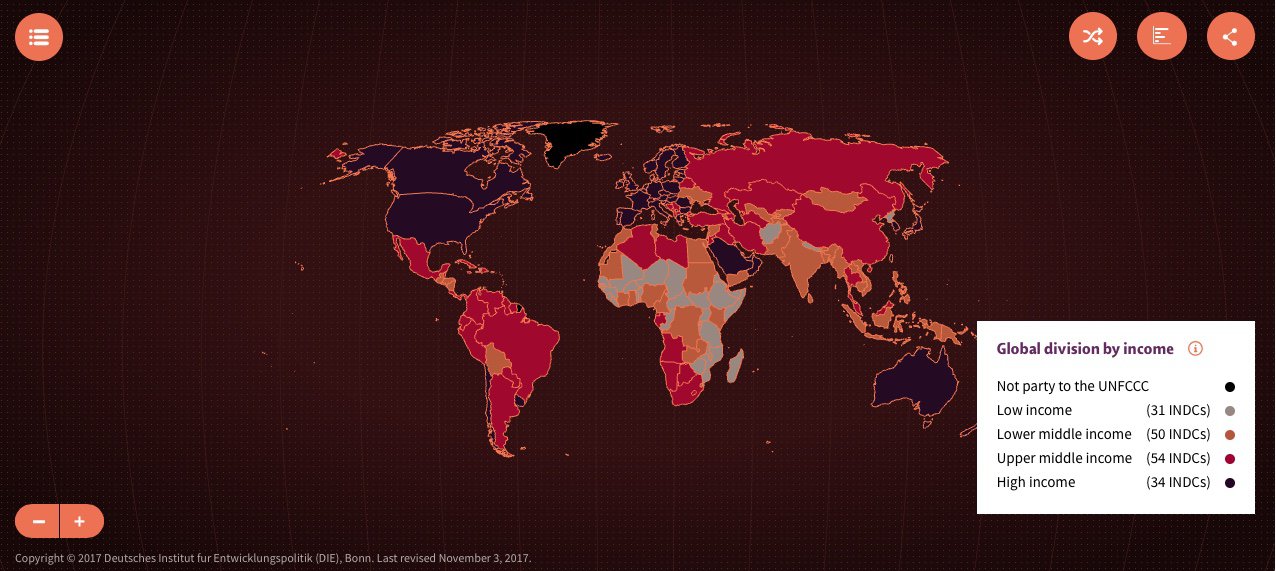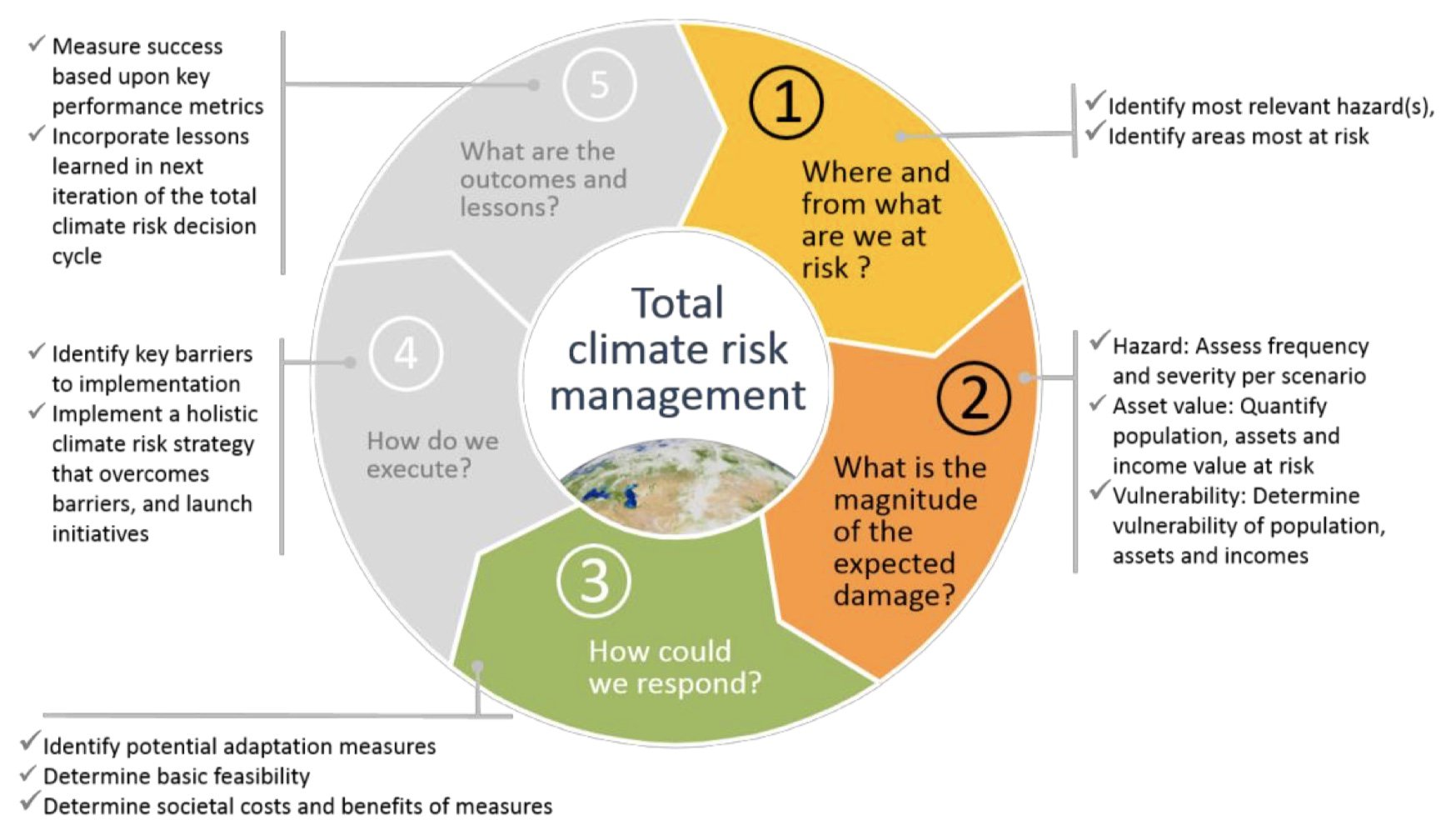
New tools to help understand environmental risk and resilience
As Oasis Hub prepares for the launch of its analytical tools section in early 2018, a range of meetings across Europe including COP23 and the Climate Services at Work - (an EASME - H2020, JPI Climate and ERA4CS networking event) showed us how rapidly developing and diverse these tools can be. These tools enable users to build up evidence-based pictures of their climate and disaster risk. They also look at conditions that enable scientific and economically guided decision around climate resilience and adaptation measures.
An illustration of this was at the COP 23, EU Pavilion Event ‘The role of decision support tools for public-private climate risk insurance solutions at COP23’. Two major collaborations in science and insurance came together to highlight a range of new tools to assist people understanding decision making factors in the climate risk assessment and climate adaptation space. And understanding National Development Contributions (NDC’s) towards climate mitigation and adaptation, created by the Munich Climate Insurance Initiative, (MCII) and Oasis Innovation HUB for Catastrophe and Climate Extremes Risk Assessment (H2020_Insurance) collaborations of insurers, scientific and economic researchers.
German Development Institute (DIE), presents the NDC explorer
Peter Pauw, from the German Development Institute (DIE), presented the NDC explorer, an online tool that shows new insights into national climate actions plans. The tool actively maps the National Development Contributions (NDC’s) in both climate mitigation and adaptation actions, planned by countries throughout the world. Denise Matias, (DIE) has also been working on understanding the countries most interested in implementing climate insurance, included in the tool.

Source: The German Development Institute / Deutsches Institut für Entwicklungspolitik (DIE)
The Economics of Climate Adaptation (ECA) Tool
Another panel member, Maxine Souvignet from the Munich Climate Insurance Initiative (MCII) has been developing a tool ‘The Economics of Climate Adaptation (ECA) Tool’: highlighting the conditions required for climate insurance and adaptation actions scenario testing. This fascinating instrument enables intended users to assess the best methodologies/ activities to increase their climate resilience. The tool carefully allows the users to experiment with different climate adaptation scenarios, such as improving flood defences and then assess the impact these actions have in enabling climate insurances to be implemented in countries that are interested in Climate Insurance systems as a part of their climate resilience actions.

Source: KfW Development Bank, Materials on Development Financing
Tracy Irvine, from Oasis HUB , also presented the advantages of using the Oasis HUB website to share the climate, natural hazard and disaster risk data, tools and services. Oasis HUB is seeking to provide available country by country information by the end of 2018, by providing data on demand service and linked map on-demand service for our users. Of course, Oasis HUB already has multiple free and commercial data sets on site, with more data uploads on a daily basis. Oasis HUB will also be implementing a crowdsourcing function helping organisations find the data and services that are not currently available on the site, by sending a message to the global data community working through the Oasis HUB portal.

Also, the H2020_Insurance Project, which is an Oasis collaboration of over 20 universities, Small Medium Enterprises (SME’s) and Insurers, also presented a range of new tools under development as a result of the European Commission, H2020 funded programme. Devices linked to different insurances were discussed, including climate and health, a wildfire management tool and a typhoon forecasting tool. Fred Hattermann, from the Potsdam Institute of Climate Impact Research (PIK) also discussed the ‘Future Danube Multi-Hazard and Multi-Risk Model’. Which is a hydrological model that also includes weather generated events by Imperial College London, thus modelling the climate change risk factors, Besides, it also includes damage information developed by German Research Centre for Geosciences, GFZ and other intense rainfall events from the Technical University of Denmark, DTU. This tool is designed to assist stakeholders in the Danube Region understand their catastrophe and climate change risk, for a region that covers four capital cities and eighty-seven million people.
Christoph Gornott, also from PIK, additionally presented an agricultural yield loss factors tool, testing now in Tanzania. The device enables the understanding of different factors in agrarian systems by showing the impacts of climate events against other factors such as human / social management of crops. The aim, working with the insurance sector is to create enough scientific information to provide the required analytics to support micro-insurance schemes for farmers.
The power of collaboration
These collaborations showed how practical tools are becoming available for use to those seeking to understand the climate change risks and plan for climate adaptation and resilience. Their very functional and practical nature will allow global planners to more accurately plan for a more sustainable and climate resilient future for our countries and communities. With these and many other tools under development, often a result of science and business partnerships, in the next few years we will see an explosion of instruments onto the market. Functionality varies from solely informational tools to tools that need to plug in data and those linked to services. Many of the tools are sector specific, e.g. Climate and Health, Climate and Energy, Climate and Forestry, but some focus on the economics of climate change and adaptations, as well as communicating climate risk and tools that allow us to use earth observation information in both data and visual formats. At Oasis HUB we are very excited to see how quickly science and industry are working together to understand risk and build tools to help us develop more resilient societies in the face of climate change.
Our improved 'Tools’ section will provide a simple way to understand the capabilities of a range of devices, as well as communication materials to help users understand how to use them. Supporting this will be a programme of regular webinars exploring the applications of these tools.
If you have a new tool you would like people to know about please contact us at hello@oasishub.co; we would love to hear from you.
Oasis HUB will share our new tools section and much more in 2018, so watch this space.
Tracy Irvine (Managing Director) Oasis HUB
